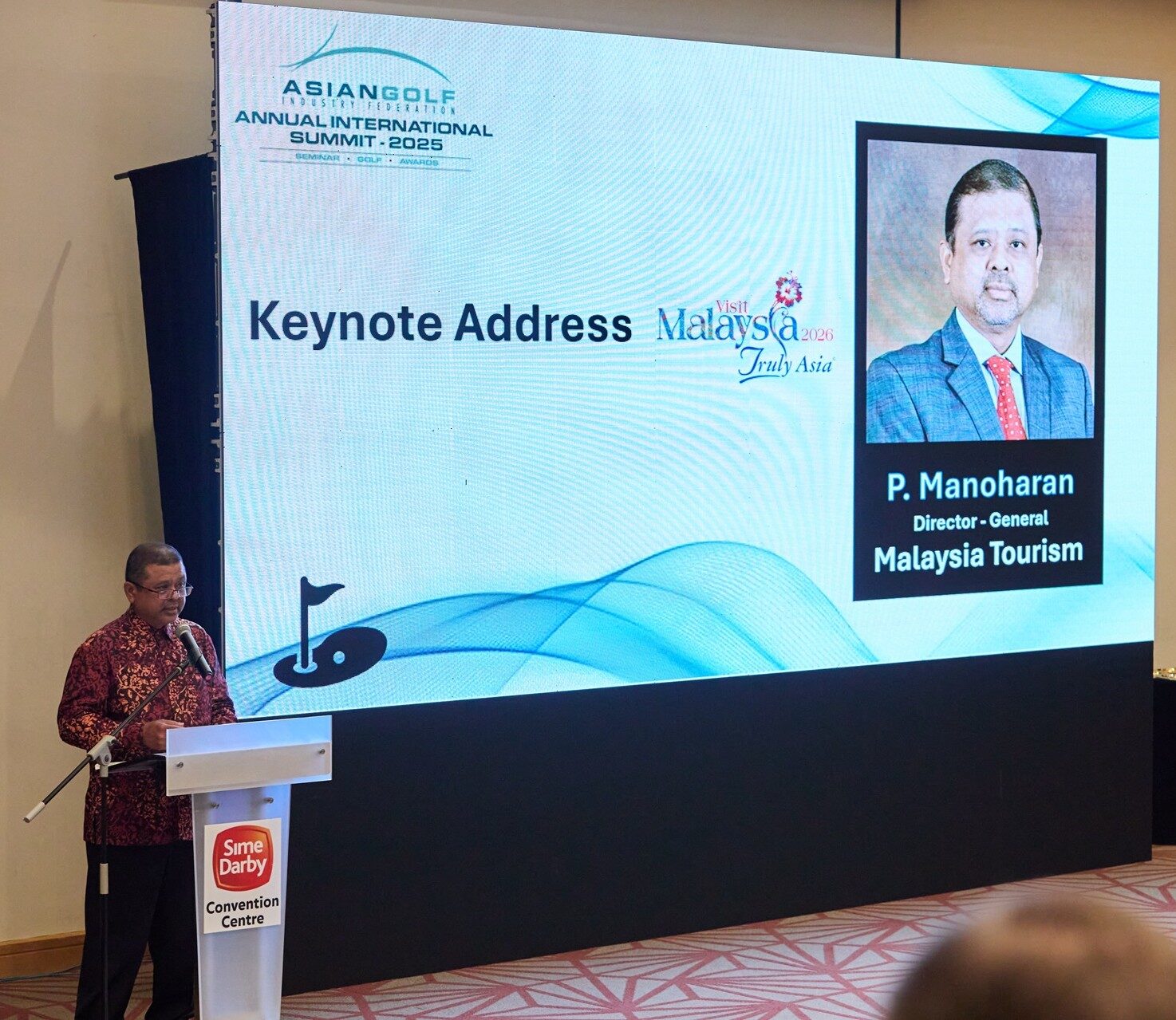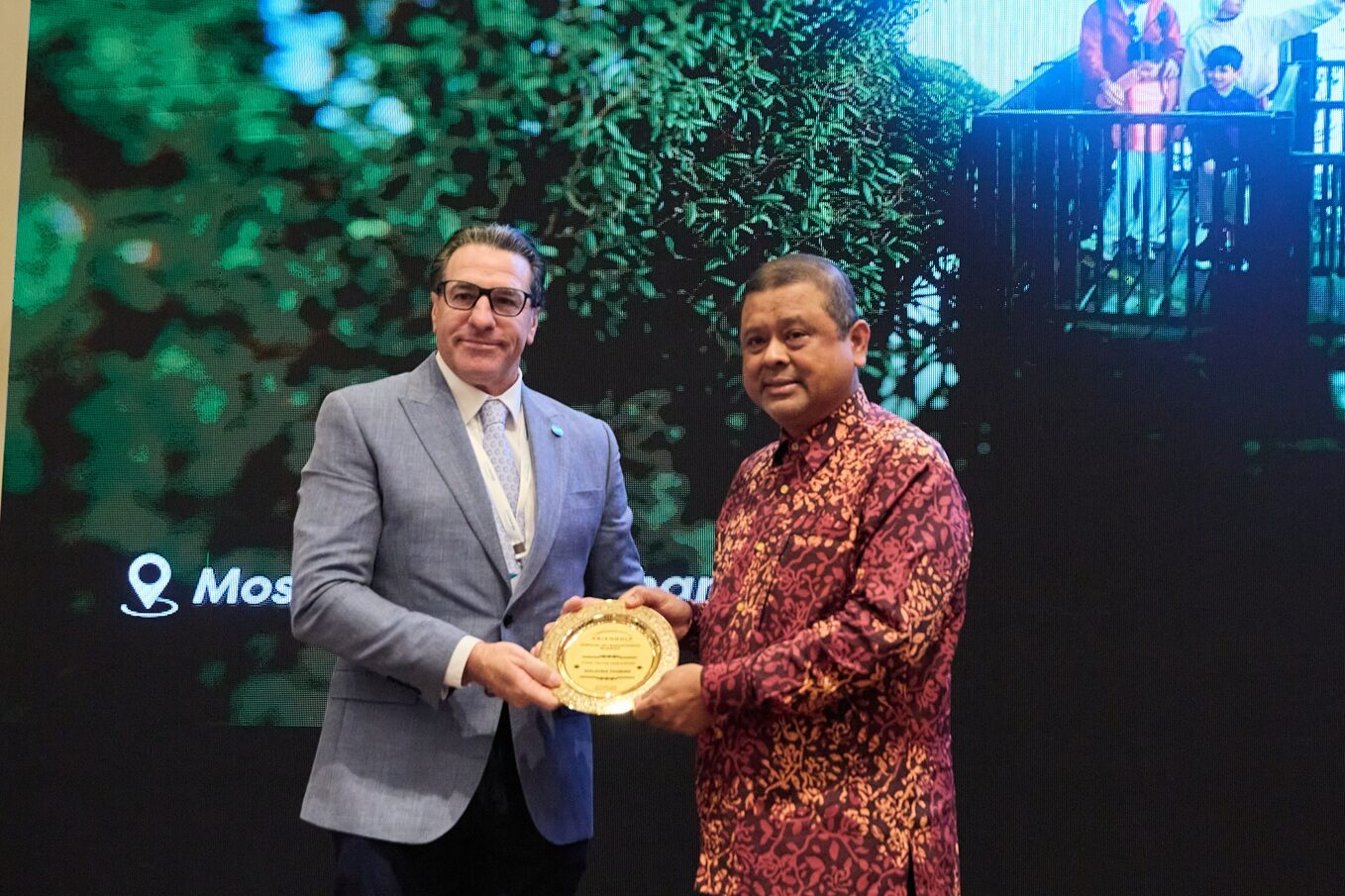
Kuala Lumpur, Malaysia: Tourism Malaysia’s Director General has outlined plans for regional collaboration on golf tourism and called on operators and travel distributors to design comprehensive, multi-country products that optimise value and experience.
Datuk Manoharan Periasamy made the appeal during his keynote address at the Asian Golf Industry Federation (AGIF) Annual International Summit.
“I am deeply honoured to stand before my fellow professionals who ensure that Asia’s fairways remain vibrant and its hospitality unmatched. I speak not only as Director General of Tourism Malaysia but also as an industry partner who sees the growing economic potential for golf tourism,” said Manoharan in his opening remarks to more than 140 attendees from no fewer than 17 countries – Australia, Brunei, Cambodia, Canada, China, England, India, Indonesia, Korea, Pakistan, The Philippines, Scotland, Singapore, Thailand, Wales, Vietnam and the United States.
Entitled Opportunity for Southeast Asia and Golf Tourism Strategy, Manoharan began his presentation by outlining the strong recovery of Malaysia’s tourism sector, saying the country welcomed 38 million international visitors in 2024 – a 31.1% increase from 2023, surpassing pre-pandemic levels by 8.3%.
In 2025, Malaysia recorded 28.2 million international visitors from January to August, a 14.5% increase compared to 24.7 million logged in the same period in 2024.
He said: “Within this encouraging performance, golf tourism stands out as one of the strategic high-yield segments that align with Malaysia’s vision to attract quality visitors. Golf travellers are particularly valuable – they travel in shoulder and off-peak seasons, stay longer and spend significantly more across various sectors. Consequently, this will reflect in the increase in the number or stay and increased expenditure while they are in Malaysia, thus reflecting Government revenue targets for this segment.”
To build on this momentum, Manoharan said Tourism Malaysia is implementing targeted initiatives across multiple channels to grow golf visitation and facilitate regional collaboration.
Currently, Tourism Malaysia conducts curated familiarisation trips for international travel agents and golf media, showcasing premier Malaysian courses and integrated packages, and is expanding these programmes to include multi-country itineraries.
They’ve also launched specialised golf packages including the ‘Unimaginable Golf Packages’ that combine premium golf with cultural experiences, wellness programmes, culinary tourism and natural attractions.
“These initiatives are designed to position Malaysia as a comprehensive golf destination, one that offers both world-class play and authentic local experiences,” said Manoharan, highlighting that Southeast Asia is strategically positioned between established golf markets like Japan, Korea and China, and emerging markets in South Asia and the Middle East.
He said: “The region currently boasts over 1,000 golf courses with Malaysia alone offering over 250 championship venues and diverse facilities. This collective capacity provides unparalleled product diversity, geographic proximity and the infrastructure for comprehensive multi-destination experiences that seamlessly combine golf with heritage sites, culinary tourism, wildlife encounters and island destinations.”

In respect of golf tourism in Southeast Asia, he listed inherent advantages – a favourable year-round climate, strategic geographic location, demonstrated cost competitiveness, rich cultural diversity, cultivating infrastructure and proven capability to host world-class tournaments.
He said: “These assets give us a solid foundation to compete globally. However, as we all know, advantages alone are insufficient. Strategic clarity, operational excellence, collaborative regional frameworks and sustained partnership commitment will determine outcomes.
“Building on this foundation, several golf tourism circuits can be leveraged to optimise visitors’ flow and distribute economic benefits across Southeast Asia.
“For instance, by integrating Malaysia’s Cameron Highlands with Thailand’s Chiang Mai and northern Vietnam for experiential travellers; connecting Malaysia’s Langkawi, Thailand’s Phuket and Samui, and Indonesia’s Bali for luxury golf resorts; linking Singapore, Kuala Lumpur and Bangkok for business travellers and urban enthusiasts, targeting accomplished players and corporate groups.
“Essentially, in the spirit of ASEAN we need to move beyond viewing regional facilities as competitors. Golf tourism operators and travel distributors should design comprehensive, multi-country products that optimise value and experience.
“Therefore, we urge operators to develop and actively promote flexible, bookable packages bundling tee-times with accommodation, tours and transportation, making them available through trade distribution channels and online platforms. Participation in familiarisation trips and calendar alignment initiatives is essential to convert interest into bookings.
“International golf tourists seek specific value propositions; year-round playability, demonstrated cost advantages, championship quality conditions and integrated experiences that combine golf with cultural and natural attractions.
“Southeast Asia delivers on all these requirements. Therefore, our strategic imperative should involve positioning regional golf assets as an integrated part of the Southeast Asian golf tourism eco-system to compete globally.
“Furthermore, through frameworks like the Indonesia-Malaysia-Thailand Growth Triangle (IMT-GT), we are promoting cross-border golf itineraries and co-ordinating regional event calendars to ensure premier tournaments are distributed throughout the year, generating sustained international visibility.
“Government initiatives, including streamlined visa processes, further enhance Malaysia’s accessibility and competitiveness. Together, by packaging integrated experiences, aligning event calendars, and co-ordinating regional promotions, we can attract higher-spending visitors, extend the length of stay, and ensure that every tee-time multiplies into hotel nights, dining, transportation, retail and ancillary spending across our economies, not only to Malaysia but across Southeast Asia.”
Gold sponsors of the 2025 AGIF Annual International Summit were The R&A, Club Car and Trojan Battery Company with Centaur Asia Pacific and Jebsen & Jessen as Silver sponsors. Tourism Malaysia was the Event Partner and Sime Darby Convention Centre the Venue Partner.
The Malaysian Association of Golf Recreational Club Owners, the Golf Course Superintendents’ Association of Malaysia and the Golf Club Managers Association of Malaysia were Supporting Partners.